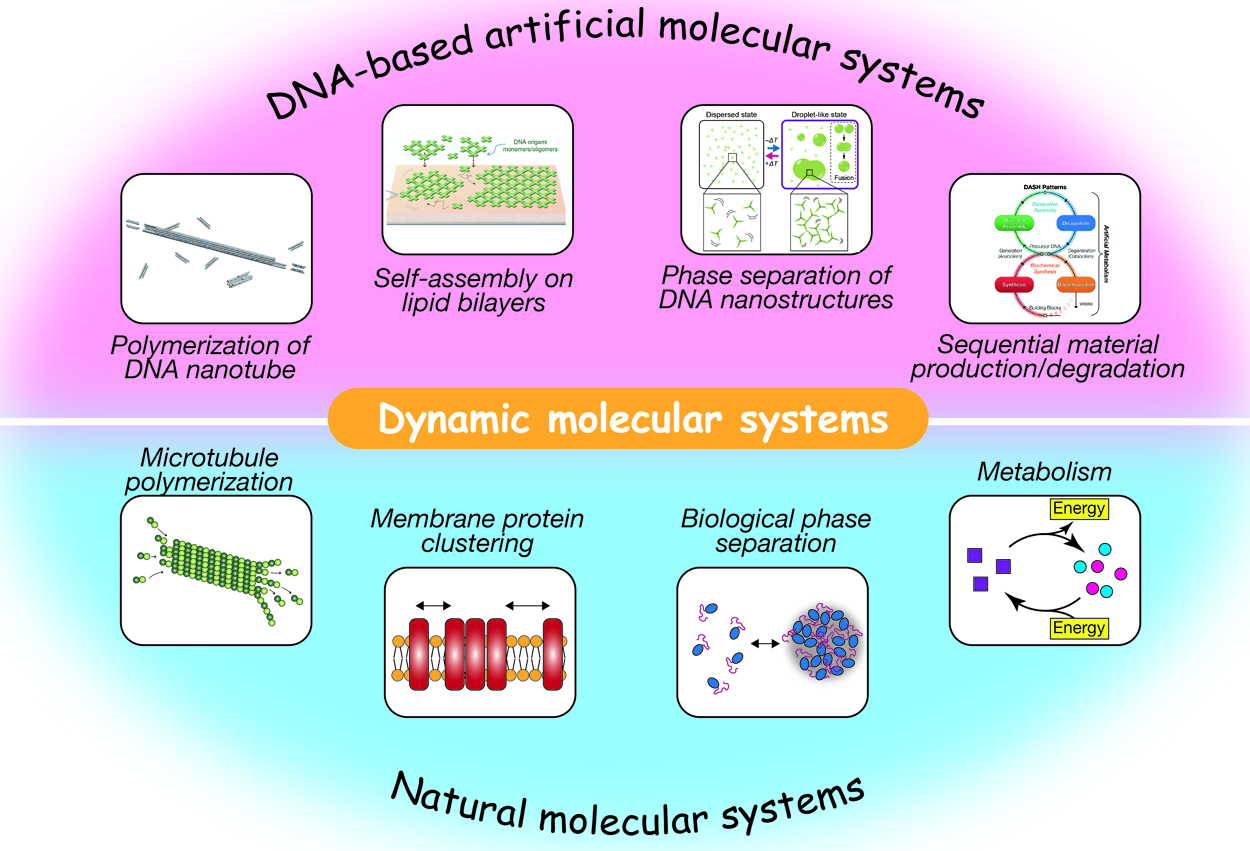3 0 0 0 OA DNA nanotechnology provides an avenue for the construction of programmable dynamic molecular systems
- 著者
- Yusuke Sato Yuki Suzuki
- 出版者
- The Biophysical Society of Japan
- 雑誌
- Biophysics and Physicobiology (ISSN:21894779)
- 巻号頁・発行日
- vol.18, pp.116-126, 2021 (Released:2021-05-26)
- 参考文献数
- 80
- 被引用文献数
- 2
Self-assembled supramolecular structures in living cells and their dynamics underlie various cellular events, such as endocytosis, cell migration, intracellular transport, cell metabolism, and gene expression. Spatiotemporally regulated association/dissociation and generation/degradation of assembly components is one of the remarkable features of biological systems. The significant advancement in DNA nanotechnology over the last few decades has enabled the construction of various-shaped nanostructures via programmed self-assembly of sequence-designed oligonucleotides. These nanostructures can further be assembled into micrometer-sized structures, including ordered lattices, tubular structures, macromolecular droplets, and hydrogels. In addition to being a structural material, DNA is adopted to construct artificial molecular circuits capable of activating/inactivating or producing/decomposing target DNA molecules based on strand displacement or enzymatic reactions. In this review, we provide an overview of recent studies on artificially designed DNA-based self-assembled systems that exhibit dynamic features, such as association/dissociation of components, phase separation, stimulus responsivity, and DNA circuit-regulated structural formation. These biomacromolecule-based, bottom-up approaches for the construction of artificial molecular systems will not only throw light on bio-inspired nano/micro engineering, but also enable us to gain insights into how autonomy and adaptability of living systems can be realized.
3 0 0 0 OA Light is required for proper female mate choice between winged and wingless males in Drosophila
- 著者
- Kazuki Watanabe Yuki Suzuki Show Inami Hirono Ohashi Takaomi Sakai
- 出版者
- The Genetics Society of Japan
- 雑誌
- Genes & Genetic Systems (ISSN:13417568)
- 巻号頁・発行日
- pp.18-00004, (Released:2018-07-11)
- 参考文献数
- 17
- 被引用文献数
- 3
In many animal species, females choose potential mating partners according to their own preferences. Thus, female preference-based mate choice affects intraspecific mating success and prevents interspecific mating. To clarify the neuronal basis of female mate choice, it is essential to identify the important relevant sensory cues. In the fruitfly Drosophila melanogaster, the courtship song of males promotes female sexual receptivity. When wild-type virgin females can freely choose one of two types of courting males (winged or wingless males), they prefer to mate with winged males. Here, we report a crucial sensory cue relevant to this female mate choice. In a female choice test, female receptivity toward winged and wingless males was markedly reduced when females had auditory impairments, although females with visual or olfactory impairments showed normal receptivity similar to wild-type females. However, females with visual impairments did not show clear mate preference toward winged males. Thus, these findings suggest that females utilize visual cues in mate choice between winged and wingless males in Drosophila.
